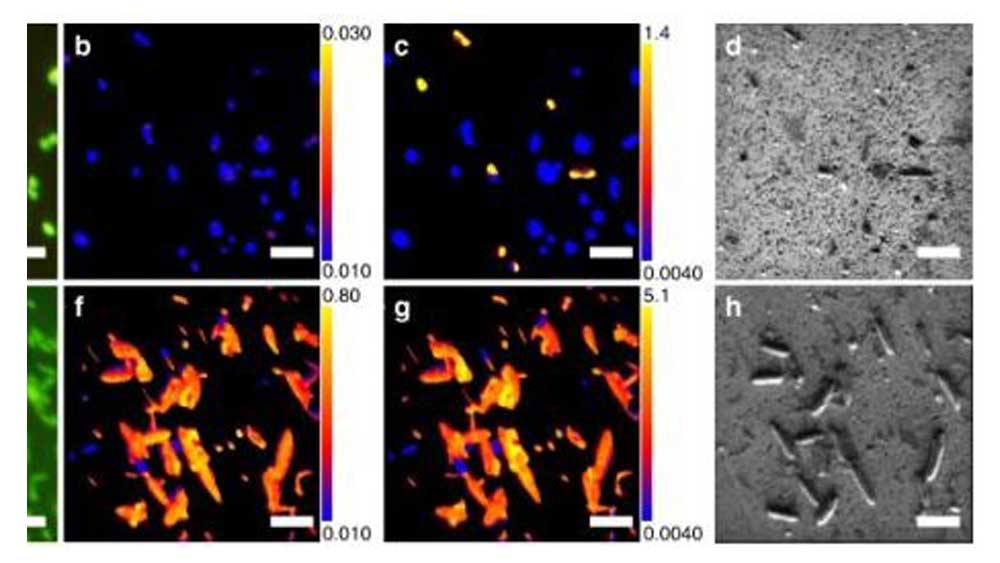Researchers from the Japan Agency for Marine-Earth Science and Technology have recovered what they claim are 100-million-year-old microbes. Drilling 74.5 meters beyond the South Pacific seafloor, the JOIDES Resolution, a research vessel, took clay samples containing 10 primary bacteria groups.1 According to the resulting study published in Nature Communications, these microorganisms existed at the same time as dinosaurs and could therefore be the most ancient organisms known to Earth.1,2
The glaring problem for evolutionists is that the microbes “survived despite having essentially no nutrients for all that time.”1 Coauthor of the study, oceanographer Steven D'Hondt, told ABC News Australia that, for these bacteria, "maintaining full physiological capability for 100 million years in starving isolation is an impressive feat."1
Impressive feat? Non-evolutionists maintain it's a near-impossible feat. During all those “millions of years,” there would have to be metabolic activity in the bacteria and that would have required energy—but from where? The bacteria couldn’t get it from the outside, so they would have to use energy sources from within—their own internal environment. Would there have been enough energy available, even with the microbes being in near suspended animation, for 100 million years?
Bacteria undergo very complicated respiration using multiple electron transport chains, often simultaneously. This involves many complex chemical reactions using cytochromes, heme proteins, iron-sulfur proteins, nicotinamide adenine dinucleotide (NAD+), ferredoxin, coenzyme Q, flavin adenine dinucleotide (FAD), dehydrogenases, and proton (H+) pumps that produce a proton gradient across a phospholipid membrane and much, much more.
Since the article identified these bacteria as aerobic, that means they must constantly guard against and repair oxidation of their biomolecules—which basically uses even more energy. Of course, during this enormous timespan, genes must also constantly be transcribed and translated into functional proteins (like enzymes). The supercoiled, circular DNA molecule of the bacterium is critical for the life of the microbe. It requires a host of repair enzymes to keep it stable and maintain genetic fidelity. As these enzymes work to repair the DNA from degrading oxidation over those millions of years, they require significant energy, as well.
Another logistical issue with assigning an old age to the bacteria is the Earth’s dynamic nature, which would never allow for the gradual accumulation of sediments “on the seafloor at a rate of no more than a metre or two every million years.”1 Over the centuries, the seabed must contend with continents shifting, seafloor spreading, bottom currents, oceans falling and rising, sediment gravity flows, water percolating upward through the seafloor, newly formed rock outcrops—all of which displace sediment. How much of this dynamic change would occur in a million years?
Rather than dating these recovered microbes as having been unmoved since the age of dinosaurs, it's more logical (and biblical) to see these bacteria as buried during the Flood and surviving in relative stillness for just thousands of years.
Stage image: Microbes found deep under seafloor sediment.
Stage image credit: Nature Communications Journal. Copyright © 2020. Adapted for use in accordance with federal copyright (fair use doctrine) law. Usage by ICR does not imply endorsement of copyright holders.
References
1. Scientists discover 100-million-year-old bacteria under South Pacific seafloor. ABC News. Posted on July 28, 2020, accessed August 3, 2020.
2. Yuki Morono et al., “Aerobic microbial life persists in oxic marine sediment as old as 101.5 million years,” Nature Communications 11 (2020 ): 3626.
*Mr. Frank Sherwin is Research Associate at the Institute for Creation Research and earned his master’s degree in invertebrate zoology from the University of Northern Colorado.

"100-Million-Year-Old" Bacteria?
The Latest
Happy Thanksgiving!
All of God’s children must overcome the temptation to allow God’s sovereign provision of our needs to be overshadowed by the pleasure of...
Kids Edition 2024: Language
Hi, kids! We created a special Acts & Facts just for you! Have fun doing the activities while learning about the wonderful world God...
Kids Edition 2024: Saturn
Hi, kids! We created a special Acts & Facts just for you! Have fun doing the activities while learning about the wonderful world God...
Kids Edition 2024: Space Rocks!
Hi, kids! We created a special Acts & Facts just for you! Have fun doing the activities while learning about the wonderful world God...
Kids Edition 2024: Caves
Hi, kids! We created a special Acts & Facts just for you! Have fun doing the activities while learning about the wonderful world God...
Kids Edition 2024: Earthquakes
Hi, kids! We created a special Acts & Facts just for you! Have fun doing the activities while learning about the wonderful world God...
Kids Edition 2024: Carnivorous Plants
Hi, kids! We created a special Acts & Facts just for you! Have fun doing the activities while learning about the wonderful world God...
Kids Edition 2024: Armored Dinosaurs
Hi, kids! We created a special Acts & Facts just for you! Have fun doing the activities while learning about the wonderful world God...
Kids Edition 2024: Turtles & Tortoises
Hi, kids! We created a special Acts & Facts just for you! Have fun doing the activities while learning about the wonderful world God...
Kids Edition 2024: Lemurs
Hi, kids! We created a special Acts & Facts just for you! Have fun doing the activities while learning about the wonderful world God...














